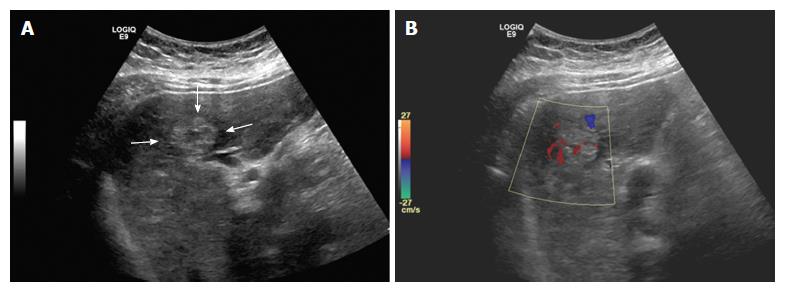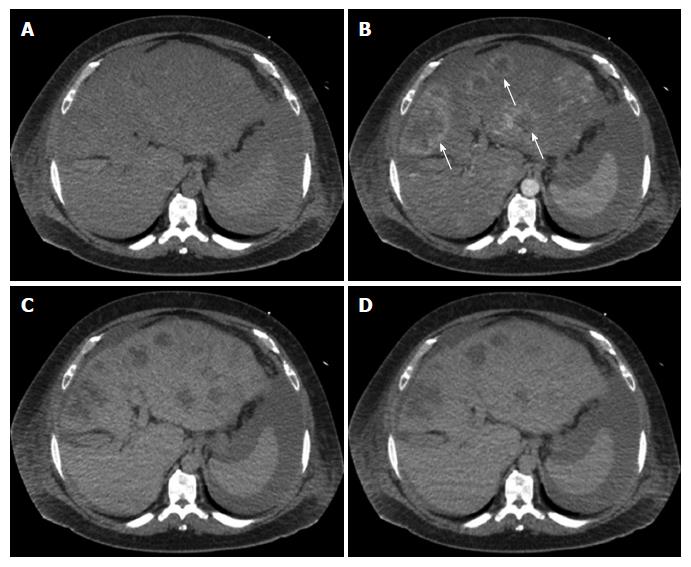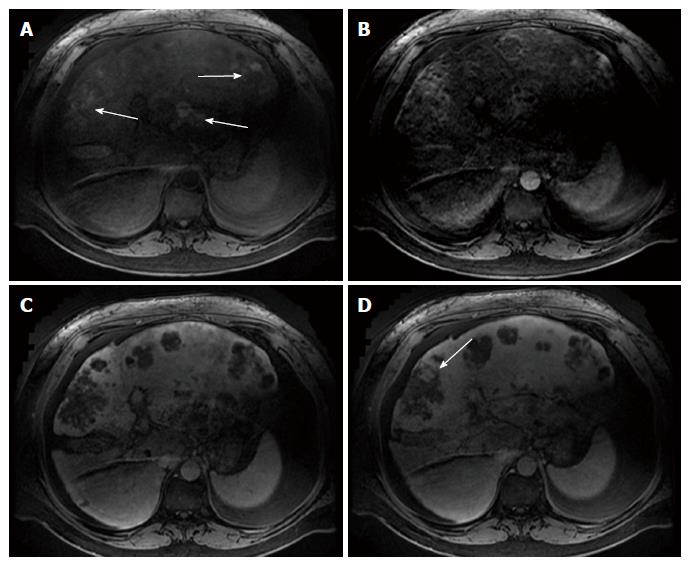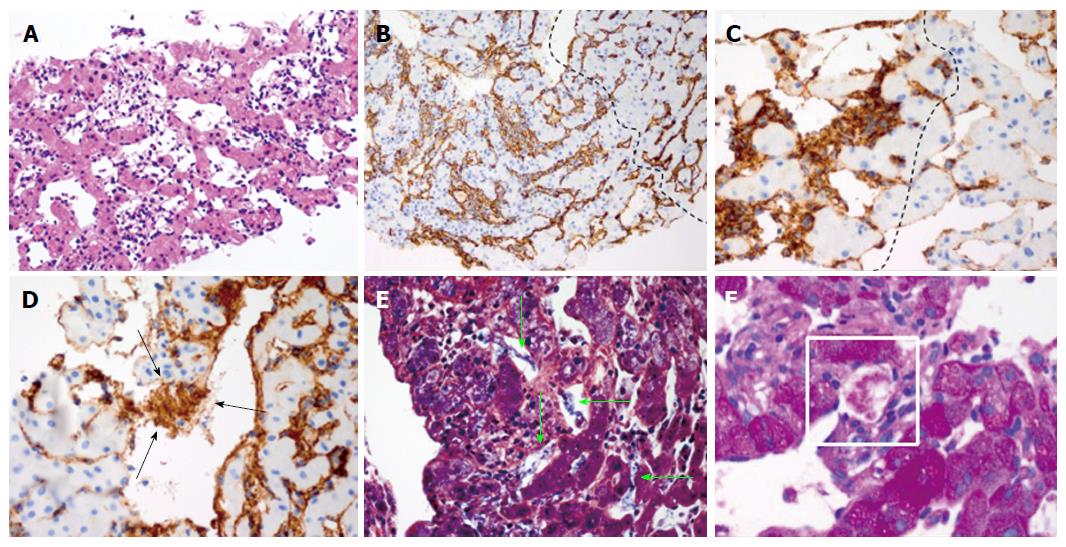Copyright
©The Author(s) 2017.
World J Gastroenterol. Apr 7, 2017; 23(13): 2443-2447
Published online Apr 7, 2017. doi: 10.3748/wjg.v23.i13.2443
Published online Apr 7, 2017. doi: 10.3748/wjg.v23.i13.2443
Figure 1 Ultrasonographic findings of hepatic angiosarcoma.
A: Representative image of tumor detected by abdominal ultrasound (arrow). Note the increased peripheral echogenicity and hypoechoic central appearance; B: Color doppler study of (A) demonstrates hypervascularity of the tumor. No arterial flow was detected (image not shown).
Figure 2 Multi-phase axial computerized tomography images of hepatic angiosarcoma.
A: Precontrast image fails to visualize the tumor likely due to its isodensity; B: Arterial phase demonstrates discrete, multifocal masses with peripheral enhancement (arrow); C and D: Portal venous and delayed phase images show discrete masses without enhancement and without definite washout.
Figure 3 Multiphase axial magnetic resonance images of hepatic angiosarcoma.
A: Precontrast image shows multiple mildly intense diffuse masses and areas of increased density in center lesions (thick arrows); B: Arterial phase demonstrates multifocal masses with peripheral enhancement; C: Portal venous phase illustrates multiple, discrete low intensity tumors; D: Delayed phase shows mild persistent enhancement of low intensity tumors (arrow) without definite washout.
Figure 4 Histopathological findings of tumor needle biopsy suggest the presence of Kasabach-Merritt syndrome.
A: Hematoxylin-eosin (H&E) staining of tumor demonstrates dilated vascular channels lined by atypical endothelial cells with hyperchromatic, enlarged nuclei and reticular cytoplasm; B: Immunohistochemical stain for vascular antigen CD34 showing diffuse infiltration of CD34+ cells throughout the sinusoids in the tumor (left of line) with focal aggregation. Uninvolved region (right of line) shows normal liver sinusoidal endothelial cells (LSEC) that highlight the nondilated sinusoids along the cord of hepatocytes; C and D: Immunohistochemical stain of von-Willebrand Factor (vWF)/Factor VIII shows increased expression within tumor cells (left of line) as compared to uninvolved region (right of line). Extracellular aggregate positive for vWF/Factor VIII is seen within dilated sinusoid of angiosarcoma (arrow); E: Phophotungistic acid-hematoxylin stain (PTAH) demonstrates fibrin nets within the tumor seen as extracellular fibrillary structures that stain blue (arrow); F: Periodic acid-Schiff (PAS) stain of the tumor demonstrates glycogen granules within extracellular material of vascular channels, representing clumps of entrapped platelets (shown in rectangle). Note that positive PAS staining of glycogen is also observed in native hepatocytes.
- Citation: Wadhwa S, Kim TH, Lin L, Kanel G, Saito T. Hepatic angiosarcoma with clinical and histological features of Kasabach-Merritt syndrome. World J Gastroenterol 2017; 23(13): 2443-2447
- URL: https://www.wjgnet.com/1007-9327/full/v23/i13/2443.htm
- DOI: https://dx.doi.org/10.3748/wjg.v23.i13.2443
















